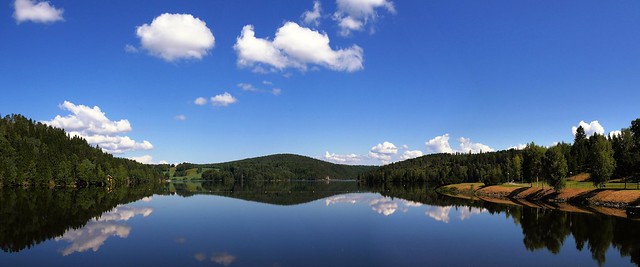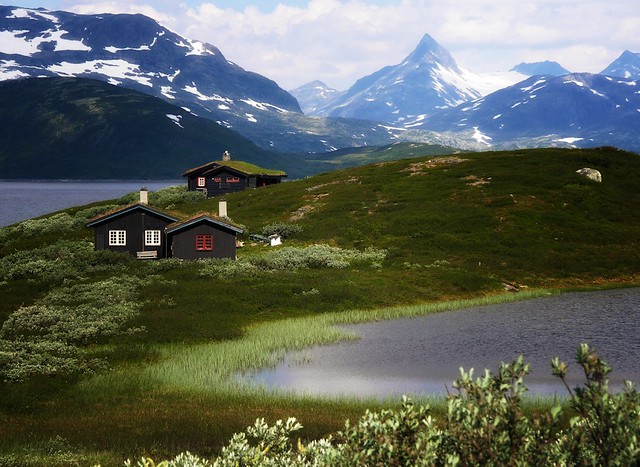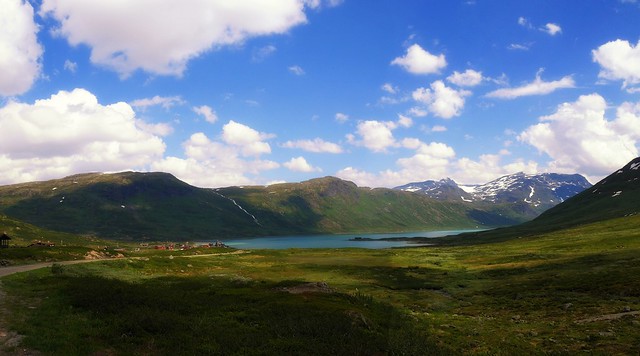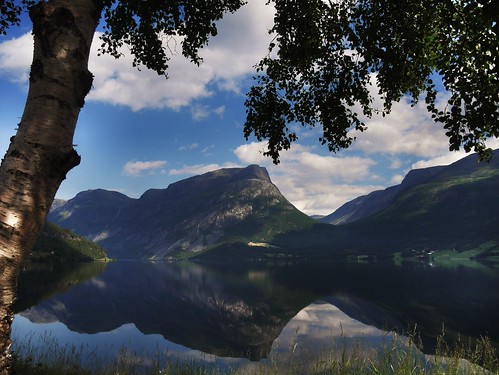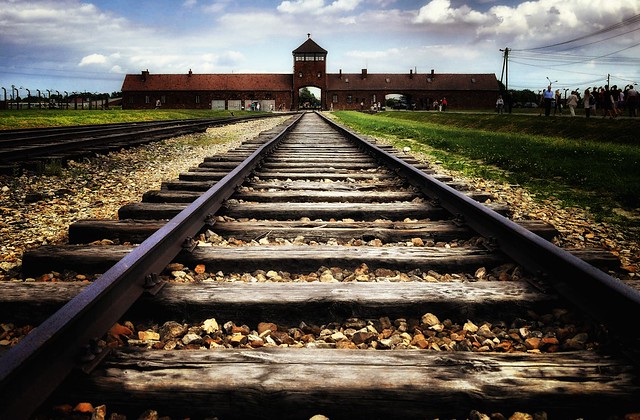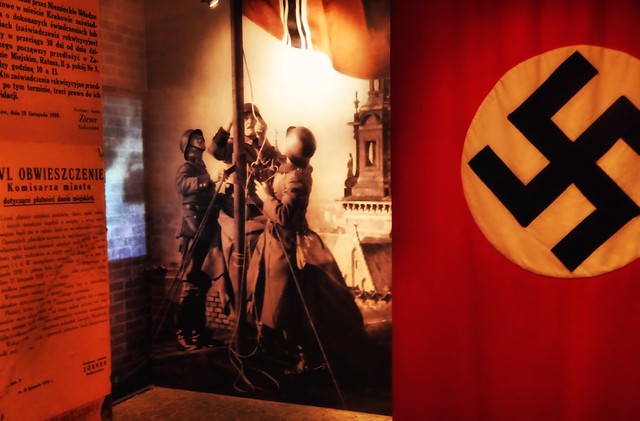July 31, 2014
ON TOUR: The impressive Pope Palace in Avignon, France
July 30, 2014
ON TOUR - going from Lyon to Avignon in France
The Cruas Nuclear Power Station is a Nuclear power plant located in Cruas and Meysse communes, Ardèche next to the Rhône River in France. The site is 35km north of Tricastin Nuclear Power Center and near the town of Montélimar.
The site contains 4 pressurized water reactors of 900 MW each, totaling 3600 MW total. The construction began in 1978, the reactors were built between 1983 and 1984.
The power station accounts for 4 to 5% of the electric energy production in France, and 40% of the annual usage by the Rhone-Alps area. The site employs about 1,200 workers and has an area of 148 hectares. Cooling water comes from the Rhône river.
Incidents
On 1 December 2009 reactor 4 was shut down after vegetation blocked the intake of the cooling system. The nuclear safety authority Autorité de sûreté nucléaire (ASN) classified the incident as level 2 on the International Nuclear Event Scale [1][2][3]
On December 5, 2011, two anti-nuclear campaigners breached the perimeter of the Cruas Plant, escaping detection for more thann 14 hours, while posting videos of their sit-in on the internet.
On the big cooling tower to the right there is an enormous painting underlining the environmental aspect of this power plant (!?)
July 29, 2014
ON TOUR: Lyon, France a city going back 2100 years
ON TOUR: Lyon in France illuminated in the night
July 27, 2014
ON TOUR: Biking along the Mozel River by Trier, Germany
July 26, 2014
ON TOUR - a day in Trier, Mozel Valley, Germany
July 25, 2014
ON TOUR - biking along Elben, Germany in rain and thunder
July 24, 2014
ON TOUR: An outstanding car ferry from Oslo to Kiel, Germany
July 22, 2014
Norway - landscape along the big river Glomma
3 photos stitched.
The river Glomma on the upper side of the Hydroelectric Power Plant: Solbergfoss
WIKI: The Glomma is the longest and largest river in Norway. The 621-kilometre long river has a drainage basin that covers a full 13% of Norway's area, all in the southern part of Norway.
Discharge: 720 m³/s
Length: 604 km
Basin area: 42,000 km²
July 20, 2014
Norway - landscapes along lake Tyin in Jotunheimen
WIKI: Hurrungane is a mountain range in the municipalities Luster and Årdal in Sogn og Fjordane, Norway. The area is southwest in the larger mountain range Jotunheimen and is also part of Jotunheimen National Park. Wikipedia
Highest point: Store Skagastølstind:
Store Skagastølstind is the third highest peak in Norway. It is situated on the border between the municipality of Luster and Årdal in Sogn og Fjordane county, Norway. The 2,405-metre mountain is part of the Hurrungane range. Elevation: 2,405 m. First ascent: July 21, 1876
July 17, 2014
Norway - landscapes by Eidsbugarden in Jotunheimen
Vi have a break here at Eidsbugarden - sitting at Turistforeningens mountain cottage Fondsbu and looking down to the Eidsbugarden Hotel and the small quay for the tiny tourist Boat MB Bygdin that makes 2-3 tours a day between Bygdin and Eidsbugarden.
July 16, 2014
July 14, 2014
Norway - landscapes: Vangsmjøsa, lake Vangsmjoesa, Valdres
July 6, 2014
Last boxcar to Auschwitz Birkenau. Oswiecim, Krakow, Poland
In the photo one of the typical boxcars used to transport jews, gypsies and others through Europe right into the concentration-camp in Auschwitz Birkenau.
After sorting and selecting the new arrivals - the most unfortunate, elderly women and men, children under 14 years of age could be marched no more than 300 meters to their final shower - a dose of the deadly gaz Zyklon-B and the immediate cremation in the fires of Birkenau.
 |
The road from the box car and down to the "showers" and crematorium is only some 300 tragic meters. The buildings was demolished after the war - the memorial place is just down by the trees there |
 |
| Remains of one of the huge Shower and crematorie complexes in Birkenau |
From the net:
Location: Oswiecim, Poland (app. 50 km west of Krakow)
Established: May 26th1940
Liberation: January 27th, 1945, by the Soviet Army.
Estimated number of victims: 2,1 to 2,5 million (This estimated number of death is considered by historians as a strict minimum. The real number of death is unknown but probably much higher, maybe 4 millions)
Sub-camps : 51
The Auschwitz complex was divided in three major camps: Auschwitz I main camp or Stammlager; Auschwitz II, or Birkenau, established on October 8th, 1941 as a 'Vernichtungslager' (extermination camp); Auschwitz III or Monowitz, established on May 31th, 1942 as an 'Arbeitslager' or work camp; also several sub-camps.
There were up to seven gas chambers using Zyklon-B poison gas and three crematoria. Auschwitz II included a camp for new arrivals and those to be sent on to labor elsewhere; a Gypsy camp; a family camp; a camp for holding and sorting plundered goods and a women's camp. Auschwitz III provided slave labor for a major industrial plant run by I G Farben for producing synthetic rubber (see Blechhammer). Highest number of inmates, including sub-camps: 155,000. The estimated number of deaths: 2.1 to 2.5 million killed in gas chambers, of whom about 2 million were Jews, and Poles, Gypsies and Soviet POWs. About 330,000 deaths from other causes.
In April 1940, Rudolph Höss, who become the first commandant, identified the Silesian town of Oswiecim as a possible site for a concentration camp. The function of the camp was initially to intimidate Poles and prevent resistance to German rule. It was also perceived as a cornerstone of the policy to re-colonize Upper Silesia, which had once been a German region, with 'pure Aryans'. On April 27th, Himmler ordered construction of the camp.
Himmler visited Auschwitz in March 1941 and commanded its enlargement to hold 30,000 prisoners. Himmler also ordered the construction of a second camp for 100,000 inmates on the site of the village of Brzezinka (Birkenau), roughly 4 km from the main camp. This massive camp was intended to be filled with captured Russian POWs who would provide the slave labor to build the SS 'utopia' in Upper Silesia. The chemical giant I G Farben expressed an interest in utilizing this labor force, too. Extensive construction work began in October 1941, under terrible conditions and with massive loss of life. About 10,000 Russian POWs died in the process.
The Death Factory... (1945)
The main camp population grew from 18,000 in December 1942 to 30,000 in March 1943. In July or August 1941, Himmler briefed Höss about the 'Final Solution'. On September 3th, 1941, Soviet POWs at the Auschwitz main camp were used in trials of the poison gas Zyklon-B. This poison gas was produced by the German company "Degesch" (Deutsche Gesellschaft zur Schädlingsbekämpfung). The were gassed in underground cells in Block 11. After this trial, a gas chamber was rigged-up just outside the main camp and in February 1942, two temporary gas chambers opened at Birkenau. The crematories were built by the German company "Topf & son" located at Erfurt.
...a system operated later at Birkenau in 1942-43, except that for the majority the 'showers' proved to be gas chambers. Only about 10 percent of Jewish transports were registered, disinfected, shaven and showered in the 'central sauna' before being assigned barracks. In May 1944, a spur line was built right into the camp to accelerate and simplify the handling of the tens of thousands of Hungarian and other Jews deported in the spring and summer of 1944.
------------------------------------------------------------------
THIS TOUR SPONSORED BY CRACOWDAYS
------------------------------------------------------------------
The fine boutique hotel and B&B - Crakowdays
within a short walk from the main square in Krakow
July 3, 2014
Final destination: Auschwitz Birkenau. Oswiecim, Krakow, Poland
The Nazi ambition to free Europe for Jews, Gypsis and other non Arians during WWII was in it's prime time in May 1944 when the new logistic advancement in these camps was having the railway lines ending right inside the wired gates of Birkenau.
After sorting and selecting the new arrivals - the most unfortunate, elderly women, men and children under 14 years of age could be marched no more than 300 meters to their final douche - a dose of the deadly gaz Zyklon-B and the immediate cremation in the fires of Birkenau. While the "lucky" one's could look forward to an average life span of 3 months before ending their life in the same way.
It makes your hair raise bending down between the rails on this place of ultimate terror, for making your photo and memorial from visiting this place, even on a sunny day 70 years later.
 |
Barracks in the Concentration-camp Birkenau in Poland |
 |
Inside a barrack in Birkenau. From 180 and up to 1000 prisoners pr. barrack Bed in 3 etages 6 men pr. bed . 2 blankets pr.bed Outside in the winter up to -40 C/F |
From the net:
Location: Oswiecim, Poland (app. 50 km west of Krakow)
Established: May 26th1940
Liberation: January 27th, 1945, by the Soviet Army.
Estimated number of victims: 2,1 to 2,5 million (This estimated number of death is considered by historians as a strict minimum. The real number of death is unknown but probably much higher, maybe 4 millions)
Sub-camps : 51
The Auschwitz complex was divided in three major camps: Auschwitz I main camp or Stammlager; Auschwitz II, or Birkenau, established on October 8th, 1941 as a 'Vernichtungslager' (extermination camp); Auschwitz III or Monowitz, established on May 31th, 1942 as an 'Arbeitslager' or work camp; also several sub-camps.
There were up to seven gas chambers using Zyklon-B poison gas and three crematoria. Auschwitz II included a camp for new arrivals and those to be sent on to labor elsewhere; a Gypsy camp; a family camp; a camp for holding and sorting plundered goods and a women's camp. Auschwitz III provided slave labor for a major industrial plant run by I G Farben for producing synthetic rubber (see Blechhammer). Highest number of inmates, including sub-camps: 155,000. The estimated number of deaths: 2.1 to 2.5 million killed in gas chambers, of whom about 2 million were Jews, and Poles, Gypsies and Soviet POWs. About 330,000 deaths from other causes.
In April 1940, Rudolph Höss, who become the first commandant, identified the Silesian town of Oswiecim as a possible site for a concentration camp. The function of the camp was initially to intimidate Poles and prevent resistance to German rule. It was also perceived as a cornerstone of the policy to re-colonize Upper Silesia, which had once been a German region, with 'pure Aryans'. On April 27th, Himmler ordered construction of the camp.
Himmler visited Auschwitz in March 1941 and commanded its enlargement to hold 30,000 prisoners. Himmler also ordered the construction of a second camp for 100,000 inmates on the site of the village of Brzezinka (Birkenau), roughly 4 km from the main camp. This massive camp was intended to be filled with captured Russian POWs who would provide the slave labor to build the SS 'utopia' in Upper Silesia. The chemical giant I G Farben expressed an interest in utilizing this labor force, too. Extensive construction work began in October 1941, under terrible conditions and with massive loss of life. About 10,000 Russian POWs died in the process.
The Death Factory... (1945)
The main camp population grew from 18,000 in December 1942 to 30,000 in March 1943. In July or August 1941, Himmler briefed Höss about the 'Final Solution'. On September 3th, 1941, Soviet POWs at the Auschwitz main camp were used in trials of the poison gas Zyklon-B. This poison gas was produced by the German company "Degesch" (Deutsche Gesellschaft zur Schädlingsbekämpfung). The were gassed in underground cells in Block 11. After this trial, a gas chamber was rigged-up just outside the main camp and in February 1942, two temporary gas chambers opened at Birkenau. The crematories were built by the German company "Topf & son" located at Erfurt.
...a system operated later at Birkenau in 1942-43, except that for the majority the 'showers' proved to be gas chambers. Only about 10 percent of Jewish transports were registered, disinfected, shaven and showered in the 'central sauna' before being assigned barracks. In May 1944, a spur line was built right into the camp to accelerate and simplify the handling of the tens of thousands of Hungarian and other Jews deported in the spring and summer of 1944.</>
-------------------------------------------------------------------
THIS TOUR SPONSORED BY CRACOWDAYS
-------------------------------------------------------------------
Photo: Window flowers at the Boutique Hotel, B&B
July 2, 2014
Inside Schindlers Metalwarefabriken in Krakow, Poland
Krakow was not bombed during the WWII - so after the war the famous Metalwarefabriken who was owned by Oscar Schindler is still there. Made even more famous after the film made by Steven Spielberger.
Today the office part of the plant is made to a museum telling the story of Krakow before, under and after the WWII - a must to visit when in Krakow.
Photo above from the time of the Nazis in Krakow as displayed in the present museum
To the left:
The madam tries out a small prisoners cell in the present war time museum at Schindlers former Metalwarefabriken
To the left:
War time uniform cap - detail in the museum
From the net:
Oscar Schindler had many more Jewish slaves in his factory than he ever needed and spent millions on protecting his plans from the Germans.
He looked after his slaves till the end of the war and no Jewish slave was ever killed in his factory. At the end of the war, he emerged broke and had nowhere to go, but he had saved over 1200 lives. Generations of Jews live today because of him.Oscar Schindler was a poor German businessman looking for a way to make a living. He had a vision that would bring him fame and riches. He left his wife, town and everything he owned behind and headed to Krakow, Poland. There he organised where and when high ranking officers and colonels of the German and Nazi armies would be at certain restaurants and pubs. He would buy them drinks and expensive cigarettes and, in return, they would have a conversation. After a while, they would become friends. Oscar Schindler learned of all the German plans for the war and of the many assaults against the Jews.
He borrowed some money from a new friend to buy a factory just outside of town. With the money, he opened the factory up and started producing goods. He did not have to pay workers, as the German officers gave him Jewish prisoners of war from the "ghetto" and isolation camps to work in his factory for free. Oscar Schindler became one of the wealthiest men in Krakow and was able to pay off his loan.
Although Oscar Schindler supported the Nazis and the war, he saw what was happening to the Jews and knew it wasn't right. They were getting murdered by the thousands and were treated unjustly because of their heritage. He put his life on the line to save generations and, as time went by, he forgot about wealth and riches and became devoted to saving the lives of Jews.
------------------------------------------------
This tour sponsored by Crakowdays
- Boutique Hotel, B&B in Krakow
-------------------------------------------------



























